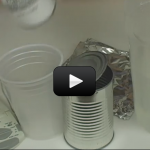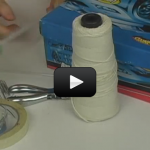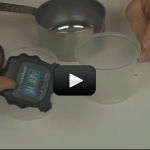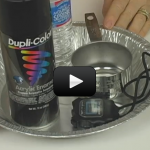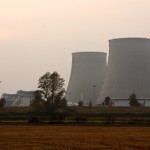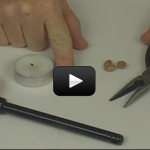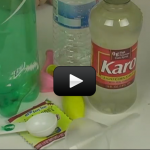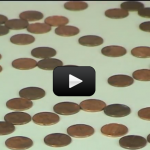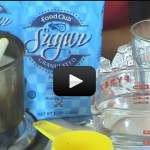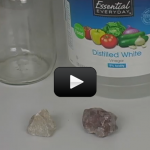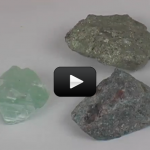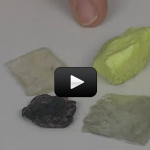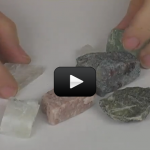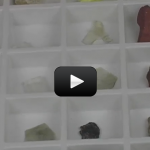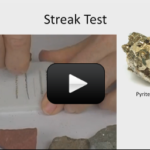Can the Sun Be Used to Heat Water?
The energy of sunlight powers our biosphere (air, water, land, and life on the earth’s surface). About 50 percent of the solar energy striking the earth is converted to heat that warms our planet and drives the winds. About 30 percent of the solar energy is reflected directly back into space. The water cycle (evaporation … Continue reading "Can the Sun Be Used to Heat Water?" |
Can Wind Be Used as a Source of Energy?
The United States has large reserves of coal, natural gas, and crude oil which is used to make gasoline. However, the United States uses the energy of millions of barrels of crude oil every day, and it must import about half its crude oil from other countries. Burning fossil fuels (oil, coal, gasoline, and natural … Continue reading "Can Wind Be Used as a Source of Energy?" |
How Can Water Be Used to Store Heat Energy?
Temperature is a measure of the average hotness of an object. The hotter an object, the higher its temperature. As the temperature is raised, the atoms and molecules in an object move faster. The molecules in hot water move faster than the molecules in cold water. Remember that the heat energy stored in an object … Continue reading "How Can Water Be Used to Store Heat Energy?" |
How Much Energy Does the Sun Produce?
Without the sun, there would be no life on Earth. The sun warms the earth, generates wind, and carries water into the air to produce rain and snow. The energy of the sun provides sunlight for all the plant life on our planet, and through plants provides energy for all animals. The sun is like … Continue reading "How Much Energy Does the Sun Produce?" |
Can Water Be Heated With Composting Plant Material?
Fossil fuels, which include petroleum, natural gas, and coal, supply nearly 90 percent of the energy needs of the United States and other industrialized nations. Because of their high demand, these nonrenewable energy resources are rapidly being consumed. Coal supplies are expected to last about a thousand years. We must find other sources of energy … Continue reading "Can Water Be Heated With Composting Plant Material?" |
Do Plants Store Energy?
A peanut is not a nut, but actually a seed. In addition to containing protein, a peanut is rich in fats and carbohydrates. Fats and carbohydrates are the major sources of energy for plants and animals. The energy contained in the peanut actually came from the sun. Green plants absorb solar energy and use it … Continue reading "Do Plants Store Energy?" |
Can a Fuel be Made From Plant Material?
Yeast is a simple living organism that can break down sugars into ethyl alcohol (ethanol) and carbon dioxide. The process by which yeast breaks down sugars into ethyl alcohol and carbon dioxide is called fermentation. The tiny gas bubbles rising in the liquid mixture in the bottle are carbon dioxide gas bubbles that are made … Continue reading "Can a Fuel be Made From Plant Material?" |
Penny Crystal Structure
The atoms in a solid, as we mentioned before, are usually held close to one another and tightly together. Imagine a bunch of folks all stuck to one another with glue. Each person can wiggle and jiggle but they can’t really move anywhere. Atoms in a solid are the same way. Each atom can wiggle … Continue reading "Penny Crystal Structure" |
Rock Candy Crystals
Crystals are formed when atoms line up in patterns and solidify. There are crystals everywhere — in the form of salt, sugar, sand, diamonds, quartz, and many more! To make crystals, you need to make a very special kind of solution called a supersaturated solid solution. Here’s what that means: if you add salt by … Continue reading "Rock Candy Crystals" |
Popcorn Rock
Popcorn rocks are different than regular dolomite samples because they have a lot more magnesium inside. This was first discovered by a geology professor in the 1980s who was dissolving the limestone around fossils he was studying in his rock samples. When he placed samples of this type in the acid to dissolve, it didn’t … Continue reading "Popcorn Rock" |
Luster
Luster is the way a mineral reflects light, and it depends on the surface reflectivity. |
Tenacity
Tenacity is a measure of how resistive a mineral is to breaking, bending, or being crushed. When you exceed that limit, fracture is how the mineral breaks once the tenacity (or tenacious) limit has been exceeded. |
Mohs’ Hardness
By the end of this lab, you will be able to line up rocks according to how hard they are by using a specific scale. The scale goes from 1 to 10, with 10 being the hardest minerals. |
Color Streak
You will be able to identify minerals by their colors and streaks, and be able to tell a sample of real gold from the fake look-alike called pyrite. |
Special Science Teleclass: Geology
This is a recording of a recent live teleclass I did with thousands of kids from all over the world. I've included it here so you can participate and learn, too! Learn about the world of rocks, crystals, gems, fossils, and minerals by moving beyond just looking at pretty stones and really being able to … Continue reading "Special Science Teleclass: Geology" |
Popcorn Rock
Popcorn rocks are different than regular dolomite samples because they have a lot more magnesium inside. This was first discovered by a geology professor in the 1980s who was dissolving the limestone around fossils he was studying in his rock samples. When he placed samples of this type in the acid to dissolve, it didn’t … Continue reading "Popcorn Rock" |
How Much Energy Does the Sun Produce?
Without the sun, there would be no life on Earth. The sun warms the earth, generates wind, and carries water into the air to produce rain and snow. The energy of the sun provides sunlight for all the plant life on our planet, and through plants provides energy for all animals. The sun is like … Continue reading "How Much Energy Does the Sun Produce?" |

